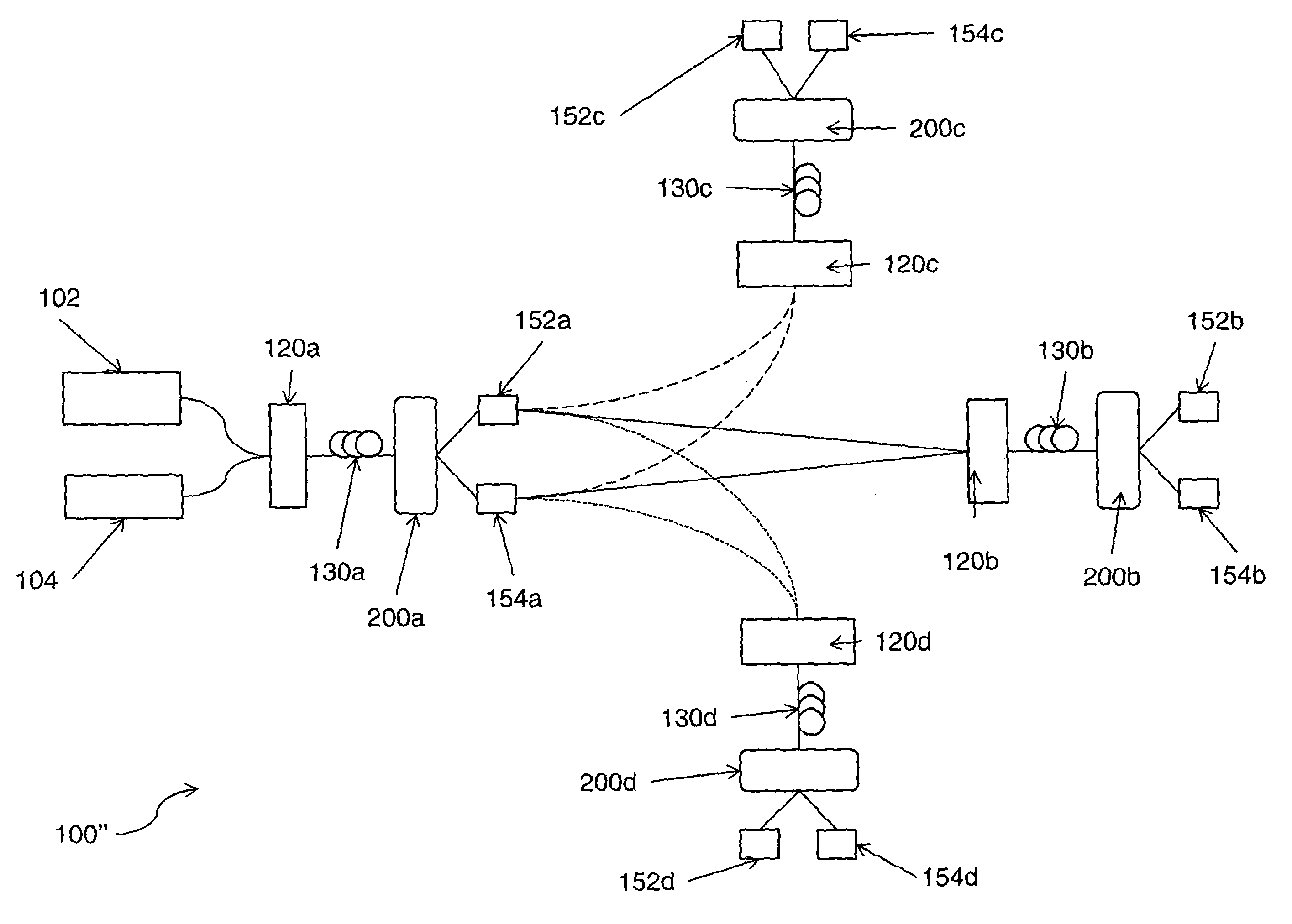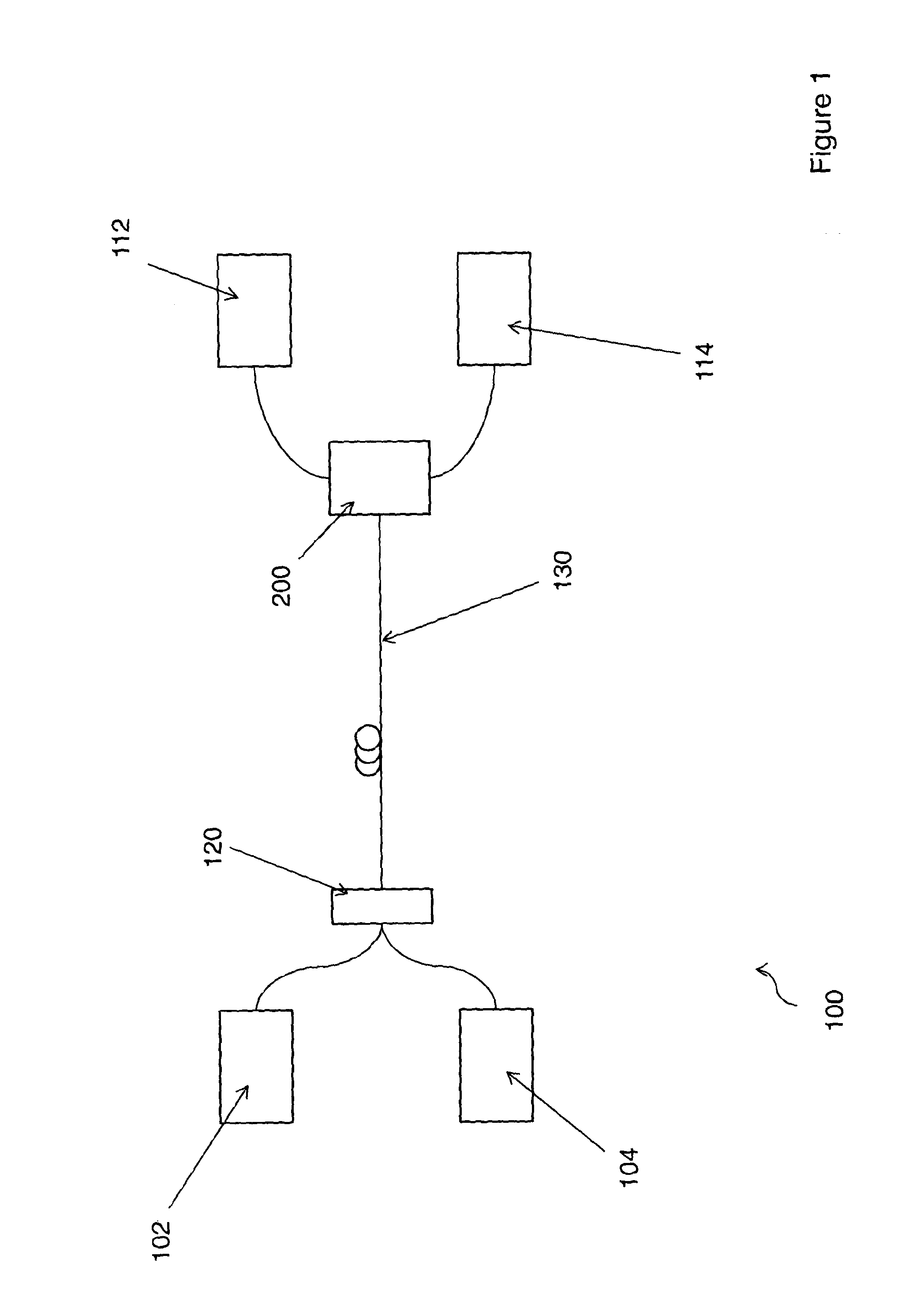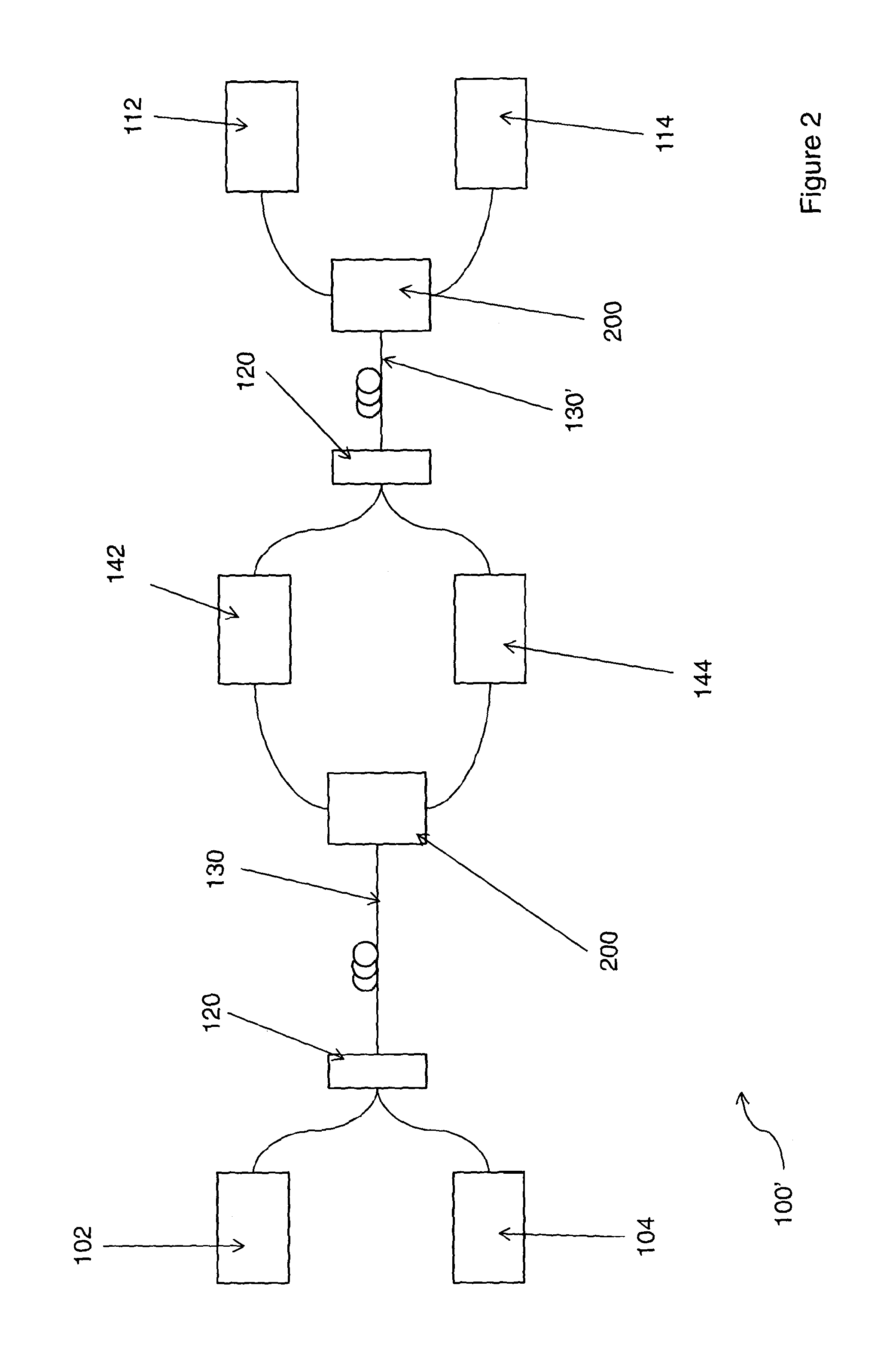Communications network
a communication network and optical signal technology, applied in the field of optical communication networks, can solve the problems of increasing the cost and complexity of the network, the optical signal required to transmit such data rates may not fit into the wavelength grid defined in the dwdm specifications, and the difficulty of recovering the transmitted signal at the receiver, so as to achieve the effect of increasing the information carrying capacity of the fiber and increasing customer demand
- Summary
- Abstract
- Description
- Claims
- Application Information
AI Technical Summary
Benefits of technology
Problems solved by technology
Method used
Image
Examples
Embodiment Construction
[0020]FIG. 1 shows a schematic depiction of a communications network 100 according to a first aspect of the present invention. The network comprises a single span of optical fiber 130 which connects a first location to a second location. At the first location a first optical transmitter 102 is connected to the optical fiber 130 via an optical coupler 120. There is also provided at the first location a second optical transmitter 104 which is also coupled to the optical fiber 130 via the optical coupler 120. At the second location a tunable splitter 200 connects the second end of the optical fiber 130 to first optical receiver 112 and second optical receiver 114.
[0021]The first optical transmitter operates in a first region of a fiber transmission window and the second optical transmitter operates in a second region of that fiber transmission window. For example, the first optical transmitter may generate a first set of optical signals between 1525 and 1543 nm and the second optical t...
PUM
 Login to View More
Login to View More Abstract
Description
Claims
Application Information
 Login to View More
Login to View More - R&D
- Intellectual Property
- Life Sciences
- Materials
- Tech Scout
- Unparalleled Data Quality
- Higher Quality Content
- 60% Fewer Hallucinations
Browse by: Latest US Patents, China's latest patents, Technical Efficacy Thesaurus, Application Domain, Technology Topic, Popular Technical Reports.
© 2025 PatSnap. All rights reserved.Legal|Privacy policy|Modern Slavery Act Transparency Statement|Sitemap|About US| Contact US: help@patsnap.com



